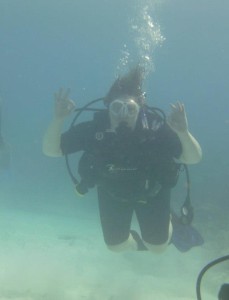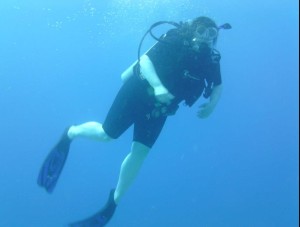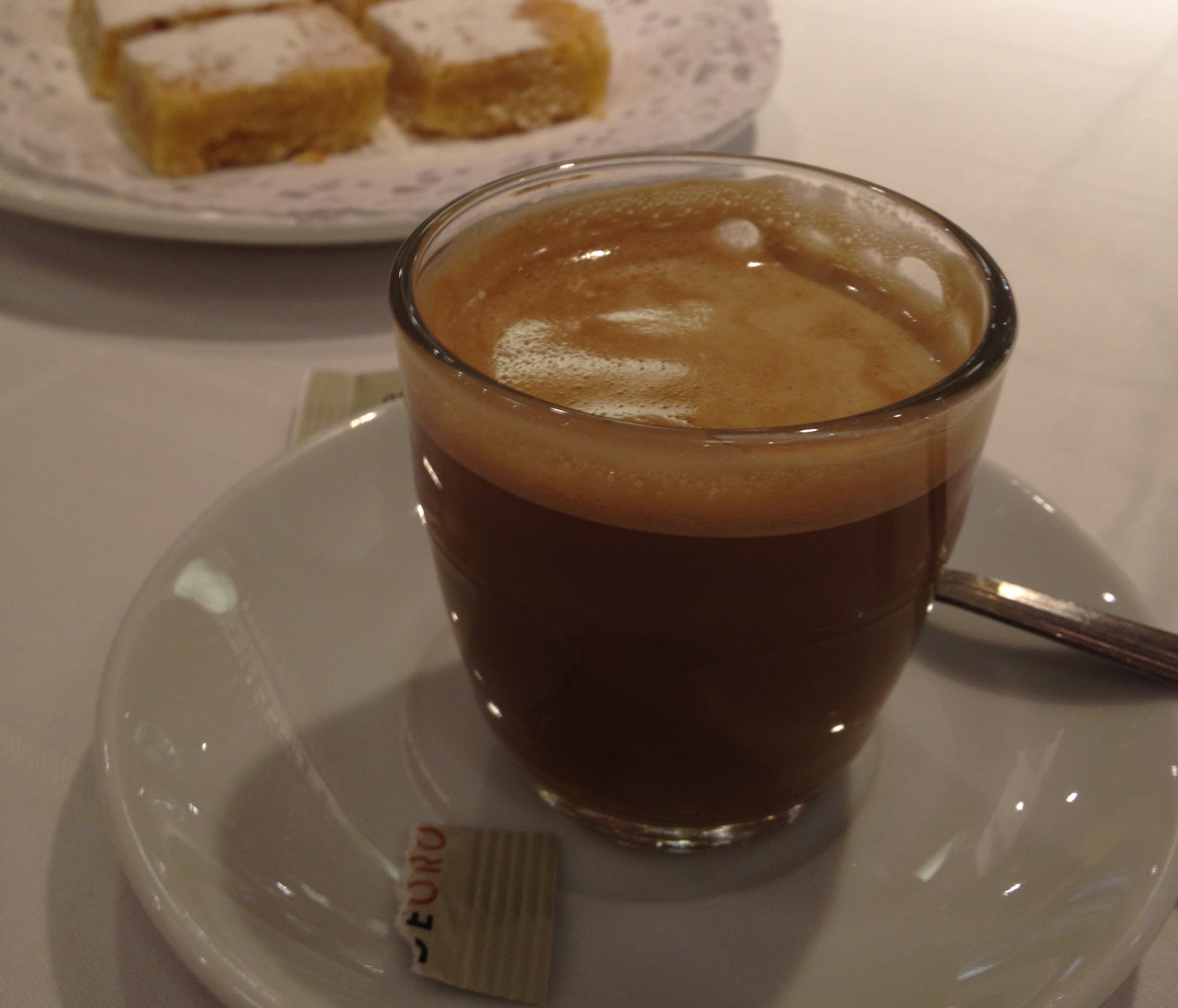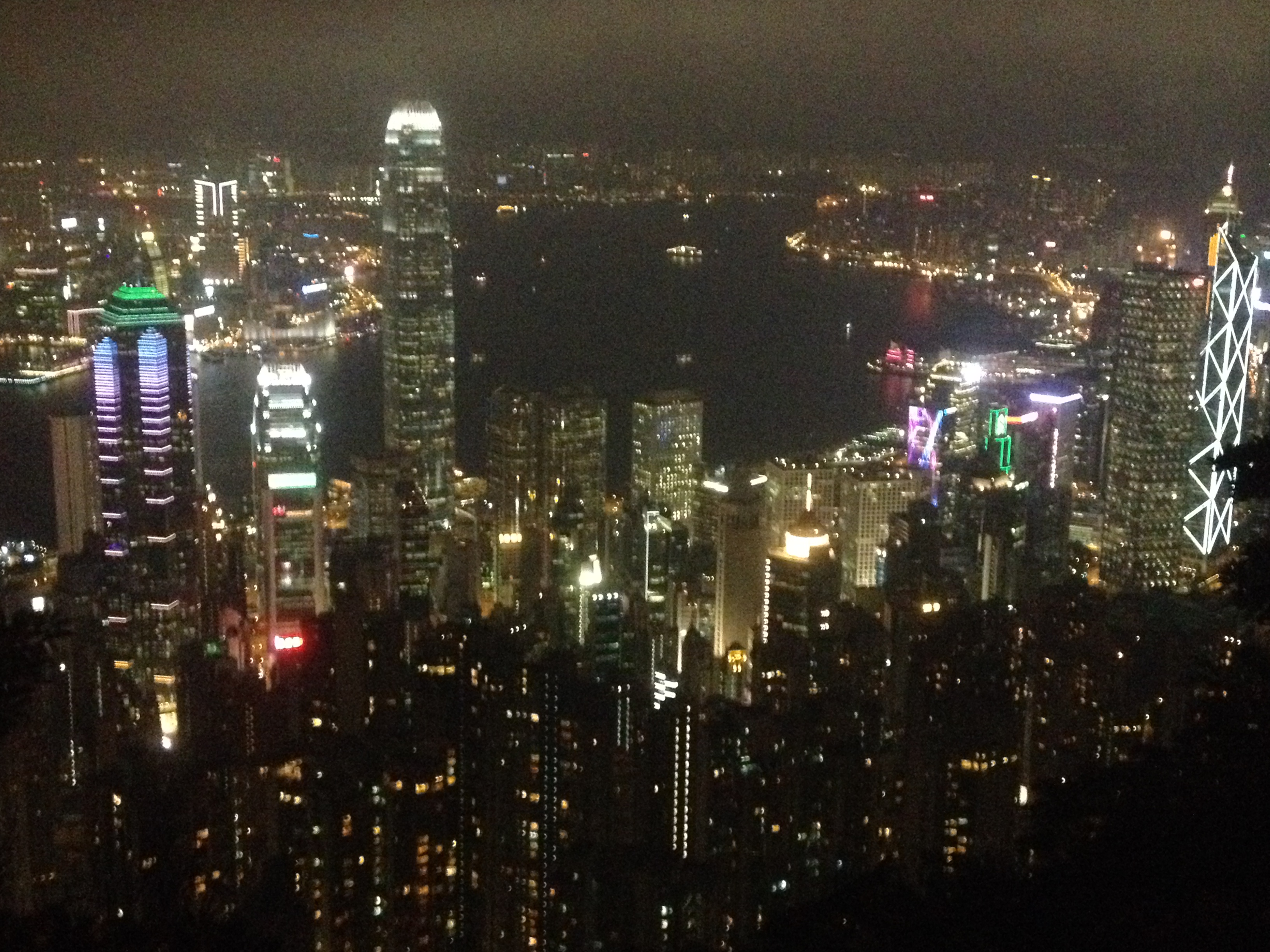
This is a photo I took in 2012, in Cancun. I hadn’t fully embraced the beach vacation concept. I still felt that I had to DO SOMETHING on a vacation, so I had decided to get my SCUBA – PADI Open Water Dive certification.
About two weeks before I left for my trip I did all the book learning and test taking online. I realized early on in the studying that I was not so much learning how to SCUBA, but really “how not to die”. I studied very, very hard. I passed my exams online, and was ready to do my practicals.
One of the things you learn when studying for your Dive certification is that you can’t go diving, then fly home within 12-18 hours…there are actually “dive calculations” that determine how long you have to wait before you can fly after diving. Here’s why:
When you dive under water, the water creates pressure on you and the air you breathe. Nitrogen is compressed out of the air you breathe, and dissolves into your blood stream. The deeper you go, the heaver the water, the more your body is compressed, and the more nitrogen is dissolved into your blood stream.
When you ascend up to sea level, there is less water pressure compressing you, and less nitrogen is dissolved into your blood stream, and your body “offgasses” the nitrogen.

When ascending from depth we are taught to pause at neutral buoyancy (float at a specific depth) every 15 ft or so – it is just good practice. These are called “decompression stops”, and allow your body to offgas, or acclimate to lighter pressure. My certification was for 60 ft deep and above, though I only went to about a 45 ft depth, and is considered within the “no-decompression” limits. For any dives deeper than 60 ft, decompression stops must be planned and taken – otherwise bad things will happen. Bad Things.
Not taking these pauses, thus allowing your body decompress, and offgas the nitrogen, will cause nitrogen to come out of solution in your blood stream, and form bubbles. This causes decompression sickness, also known as the bends.

The bends can still happen once you finish your dive, and are on dry land, if you ascend to height too quickly without spending enough time at sea level. Note I said “sea level” and not “ground” level. If you dive, then surface and climb a mountain, you can still experience decompression sickness.

Whew! Well that was just a long winded way to say that I made sure I got my practical dives and certification completed in the first three days I was in Cancun, so I didn’t have to worry about flying home. Then I spent the remaining days staring out at the ocean…when I wasn’t exploring downtown Cancun, and the Hotel Zone for the best burritos and cocktails.
I can’t tell you how long I stood on my 11th floor deck staring at this view. Probably till the sun went down – it was that mesmerizing. I’d never seen such defined bands of color in the ocean like this.
The image at the top of this post almost seems like abstract art, but it is an unaltered photo.
The underwater photos were taken by the dive photographer that came with us.







